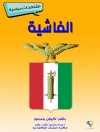This volume focuses on research and practical issues connected with mortars on historic structures.
The book is divided into four sections: Characterisation of Historic Mortars, Repair Mortars and Design Issues, Experimental Research into Properties of Repair Mortars, and Assessment and Testing. The papers present the latest work of researchers in their field. The individual contributions were selected from the contributions to the 2nd Historic Mortars Conference, which took place in Prague, September, 22-24, 2010. All papers were reviewed and improved as necessary before publication. This peer review process by the editors resulted in the 34 individual contributions included in here. One extra paper reviewing and summarising State-of-the-Art knowledge covered by this publication was added as a starting and navigational point for the reader.
The editors believe that having these papers in print is important and they hope that it will stimulate further research into historic mortars and related subjects.
Mục lục
Preface.- Acknowledgements.- Historic Mortars: Characterisation, Assessment and Repair. A State of the Art Summary, by Jan Válek, John J. Hughes and Caspar J.W.P. Groot.- Chapter I : Characterisation of historic mortars: Historic documents in understanding and evaluation of historic lime mortars, by Cornelia Marinowitz, Claudia Neuwald-Burg and Matthias Pfeifer.- The earliest use of lime and gypsum mortars in Cyprus, by Μaria Philokyprou.- Mineralogical and microstructural analysis of mortars from Kushite archaeological sites, by Jean-Pierre Letourneux and Serge Feneuille.- Cement Microstructures and Durability in Ancient Roman Seawater Concretes, by Marie D. Jackson, Gabriele Vola, Dalibor Všianský, John P. Oleson, Barry E. Scheetz, Christopher Brandon and Robert L. Hohlfelder.- Historic mortars with burned alum shale as an artificial pozzolan, by Sölve Johansson and Jan Erik Lindqvist.- 19th century “Novel” building materials: examples of various historic mortars under the microscope, by Johannes Weber, Karol Bayer and Farkas Pintér.- Lime mortar with natural hydraulic components: characterisation of reaction rims with FTIR imaging in ATR-mode, by Anja Diekamp, Roland Stalder, Jürgen Konzett and Peter W. Mirwald.- Characterisation of dolomitic lime mortars from the Benedictine monastery in Riesa, Saxony (Germany), by Heiner Siedel, Steffen Michalski and Bernd Ullrich.- Hydraulicity in historic lime mortars: a review, by Jan Elsen, Koenraad Van Balen and Gilles Mertens.- Characterisation of decorative Portuguese gypsum plasters from the 19th and 20th centuries: the case ofthe Bolsa Palace in Oporto, by Teresa Freire, António Santos Silva, Maria do Rosário Veiga and Jorge de Brito.- Repair mortars studied for the conservation of temple G1 in Mỹ Sơn, Vietnam, by Cristina Tedeschi, Luigia Binda and Paola Condoleo.- Characteristics of mortars from ancient bridges, by Dita Frankeová, Zuzana Slížková and Miloš Drdácký.- Diagnosis, characterisation and restoration of the internal renders of Santíssimo Sacramento church in Lisbon, by António Santos Silva, Giovanni Borsoi, Maria do Rosário Veiga, Ana Fragata, Martha Tavares, Fátima Llera, Belany Barreiros and Telma Teixeira.- Chapter II : Repair mortars and design issues: Masonry repair options and their philosophical ramifications, by Alan M. Forster.- Conservation of historic renders and plasters: from laboratory to site, by Maria do Rosário Veiga.- Comparison between traditional, lime based, and industrial, dry mortars, by Albert Jornet, Cristina Mosca, Giovanni Cavallo and Guido Corredig.- Repair mortars for the sandstones of the cathedral of Berne, by Christine Bläuer, Hermann Häberli, Annette Löffel and Bénédicte Rousset.- Compatibility of repair mortars with 19th century natural cement cast stone from the French Rhône-Alpes region, by Myriam Bouichou, Elisabeth Marie-Victoire, Emmanuel Cailleux and Denis Sommain.-
Two views on dealing with rain penetration problems in historic fired clay brick masonry, by Caspar J.W.P. Groot and Jos Gunneweg Chapter III : Experimental research into properties of repair mortars: Experimental study of hot mixed mortars in comparison with lime putty and hydrate mortars, by Jan Válek and Tomáš Matas.- The effect of calcination time upon the slaking properties of quicklime, by Dorn Carran, John Hughes, Alick Leslie and Craig Kennedy.- The hydration of modern Roman cements used for current architectural conservation, by
Christophe Gosselin, Karen L. Scrivener , Steven B. Feldman and Wolfgang Schwarz.- The effect of relative humidity on the performance of lime-pozzolan mortars, by Ioannis Karatasios, Maria Amenta, Maria Tziotziou and Vassilis Kilikoglou.- Morphological and chemical influence of calcium hydroxide on the plasticity of lime based mortars, by Deborah Klein, Sonja Haas, Sven-Olaf Schmidt and Bernhard Middendorf.- Water transport between mortar and brick: the influence of material parameters, by Roel Hendrickx, Staf Roels and Koenraad Van Balen.- Problems in the assessment of the stress-strain relationship of masonry, by Claudia Neuwald-Burg and Matthias Pfeifer.- Influence of the mechanical properties of lime mortar on the strength of brick masonry, by Adrian Costigan and Sara Pavía.- Influence of interfacial material pore structure on the strength of the brick/lime mortar bond, by Mike Lawrence, Pete Walker and Zhaoxia Zhou.- Grouts for injection of historical masonries: influence of thebinding system and other additions on the properties of the matrix, by Ioanna Papayianni, Maria Stefanidou and Vasiliki Pachta.- Lime based grouts for strengthening of historical masonry buildings in Slovenia, by Mojmir Uranjek, Vlatko Bosiljkov, Roko Žarnić and Violeta Bokan Bosiljkov.- Chapter IV: Assessment and testing: Characterisation of mortars using drilling resistance measurement system (DRMS): tests on field panels samples, by Dória Costa, Ana Magalhães and Maria do Rosário Veiga.- In situ techniques for the characterisation of rendering mortars, by Ana Paula Ferreira Pinto, Rita Nogueira and Augusto Gomes.- Application of 1H NMR to the hydration monitoring of lime-pozzolan mortars, by Maria Tziotziou, Eleni Karakosta, Ioannis Karatasios, Michalis Fardis, Pagona Maravelaki-Kalaitzaki, Georgios Papavassiliou and Vassilis Kilikoglou.- Non-standard testing in characterisation and consolidation assessment of historic mortars, by Miloš Drdácký.- Author Index.












